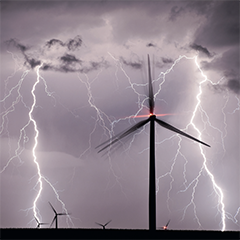In November last year, the Prime Minister of the United Kingdom, Mr Boris Johnson, announced an ambitious 10 Point Plan for a ‘green industrial revolution’, which is hoped will create and support up to 250,000 jobs. This plan covers clean energy, transport, nature and the use of innovative technologies. The plan will allow the UK to make a positive contribution to global climate change by eliminating the country’s contribution by an anticipated date of 2050.
It is ambitious and will need continued support from the UK government and allied stake holders and will undoubtedly be amended and updated as it develops. Under this plan, investment into green energy solutions is key and increasing the pace of installations of, for example, on shore and off shore wind turbines, will be required.
The UK already generates more electricity from offshore wind than any other country, harnessing the wind power our seas are well placed to produce. Government support to unleash the potential of this industry has been partly responsible for the two thirds cost reduction in offshore wind power generation in the last five years. By 2030, the UK aims to produce 40GW of offshore wind, including 1GW from the innovative and very new floating offshore turbines in the windiest parts of the seas.
This new technology will open up new areas of seas and oceans, where the deep water has not allowed the existing technology to be employed. This is an exciting development for the installation of offshore wind technologies world-wide.
To integrate clean technologies like offshore wind, we must transform our energy system, building more network infrastructure and utilising smart technologies, such as energy storage. Additionally, use of extra equipment on turbines that can monitor visibility, warn of the approach of severe weather and lower health and safety risks must also be considered.
These new structures bring with them both new engineering challenges for their manufacture and installation and for their continued efficient and safe operation. Whilst wind turbines require an energetic atmosphere to work effectively, the change in global weather patterns resulting in more frequent and more powerful storms has increased the risks posed when installing them and whilst operating them.
New and existing meteorological sensors and measurements are becoming ever more important for their installation and maintenance, whilst continuing to offer safety for passing maritime vessels and aircraft.
























